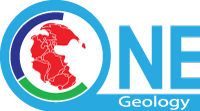1.1 Background
The OneGeology project aims for a complete covering of the world with a target 1:1 000 000 geological map. Every country will display its own map series within the national or wider boundaries that it chooses. Further integration or international harmonization of the content is not included in the project at this stage. The maps are displayed as Web Services, so the service provider keeps full control of the national map, while it is still possible by calling all the web services to compose a full covering of the world.
These pages make up one of a series of "cookbooks" written to assist organizations contributing to OneGeology. This particular cookbook describes how to deliver images of geological maps over the Internet as an Open Geospatial Consortium (OGC) Web Mapping Service (WMS). See http://portal.opengeospatial.org/files/?artifact_id=1081&version=1&format=pdf for the WMS 1.1.1 standard and (http://portal.opengeospatial.org/files/index.php?artifact_id=14416) for the newer WMS 1.3.0/ISO standard that OneGeology currently supports.
This cookbook explains how to set up both version 1.1.1 and 1.3.0 Web Map Services simultaneously and with minimal extra effort for adding the support for a version 1.3.0 WMS service. The OneGeology Portal now supports version 1.3.0 as the default, i.e. where both versions are suppoprted 1.3.0 will be used. Note, version 1.3.0 is required for 3 star accreditation.
You will need to set up a WMS to conform to being a Level 1 participant in OneGeology. If you are already familiar with how to set up a WMS using software you already possess, you can read this guide (especially Section 2: WMS Profile) just to find out the standard requirements for a OneGeology conformant WMS. If you are unfamiliar with how to set up a WMS, you can use the example in this cookbook which shows in detail how to achieve this using the Open Source MapServer software (on a variety of platforms) and also provides pointers on doing this using ESRI ArcGIS and ArcIMS software. This cookbook package consists of two parts: (1) these pages, and (2) two exemplar WMS services based on British Geological Survey data,(i) an exemplar configuration using a shapefile with the BGS 625k data and, (ii) an exemplar configuration using an image file (such as might be created by scanning a paper map, when digital vector GIS data is not available for a particular country currently) using the BGS 625k bedrock age map, available for download over the Internet from a BGS FTP (file transfer protocol) server.
We provide two downloads depending on your needs:
- https://resources.bgs.ac.uk/OneGeology/1G_WMS-exemplar-data-MS6-update.zip
This zip file contains just the data and MapServer templates for the two exemplar services, configured for a standard MS4W installation. Use this version of the zip if you already have a working copy of Windows MapServer (e.g. version 6.0.0+), or if you are compiling MapServer for Linux. This file is approximately 22Mb. - https://resources.bgs.ac.uk/OneGeology/1G_ms4w3_MS6-with-exemplar-data.zip
This zip file contains a copy of MS4W MapServer (v.6.0.1) allowing you to serve both a WMS 1.1.1 and WMS 1.3.0, and the exemplar services data. This version also contains a custom ‘crs’ file holding CRS:84 projection information, which can be used for setting up WMS 1.3.0 web services. Use this version of the zip if you are doing a fresh installation of MapServer for Windows Apache or IIS. This file is approximately 100Mb.
Section last modified: 04 Jan 2016
